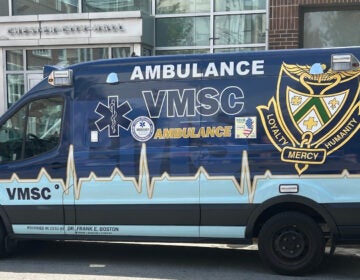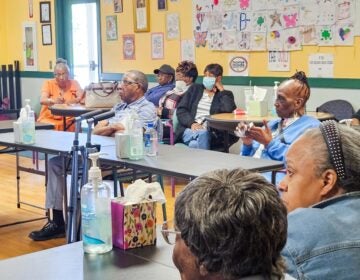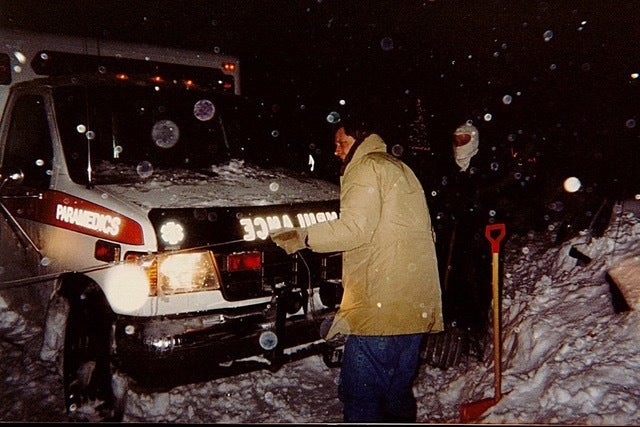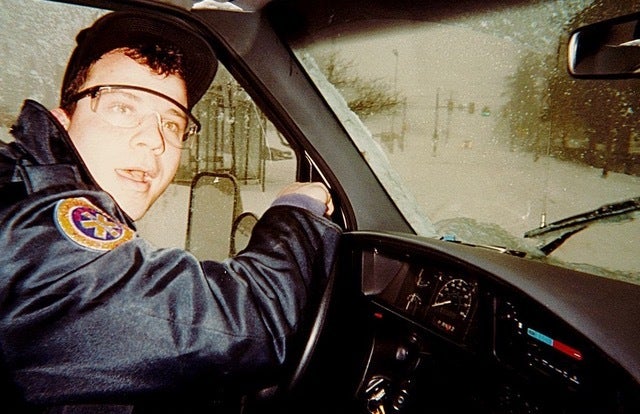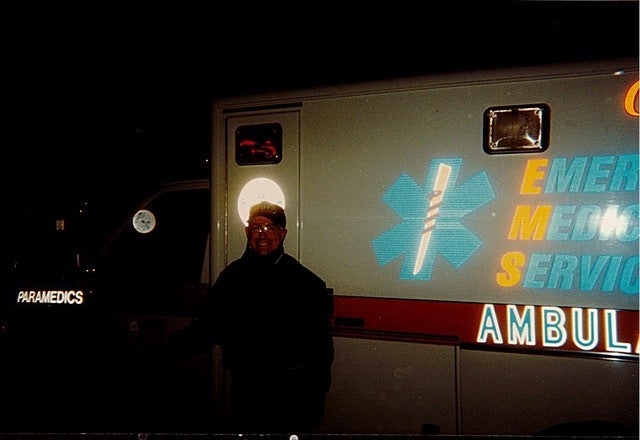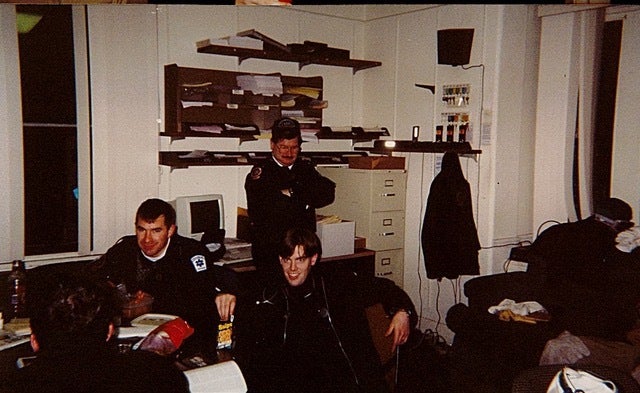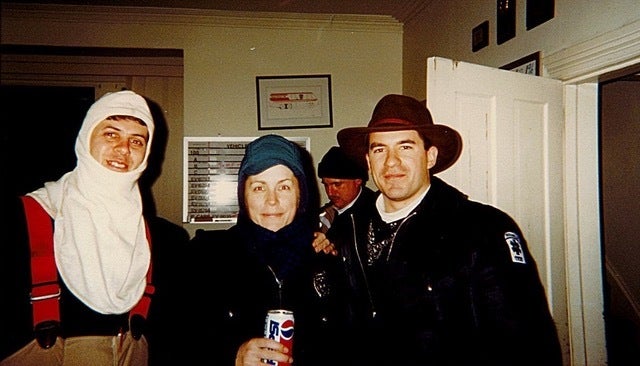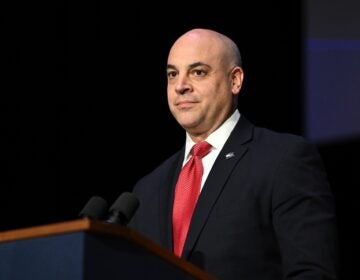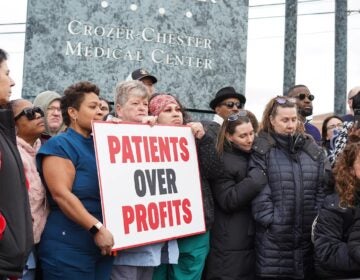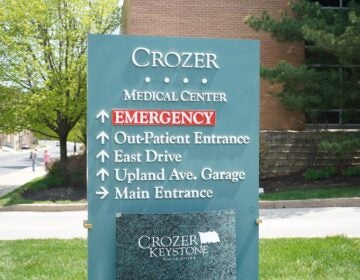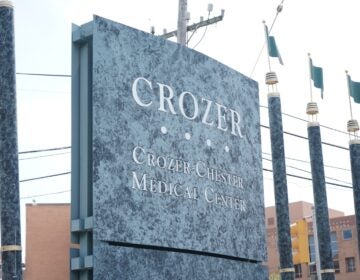Delaware County residents plagued by longer ambulance rides, emergency room waits
Crozer Health’s shutdown is affecting everyone from Delaware County’s working-class neighborhoods near the riverfront all the way to the Main Line.
From Delco to Chesco and Montco to Bucks, what about life in Philly’s suburbs do you want WHYY News to cover? Let us know!
Crozer-Chester Medical Center in Upland sits right outside the city of Chester. Residents living in Delaware County’s only city are afflicted with a range of poor health outcomes, including asthma, cancer and the highest infant mortality rate in Pennsylvania.
Crozer Health ambulance rides within range of the system’s flagship hospital once transported one of Delaware County’s sickest patient populations from the scene to the emergency room within minutes. There, patients had access to Delaware County’s only high-level trauma center.
Since the collapse of Crozer, those ambulances and all four of its hospitals have been collecting dust and creating a cascading effect.
While new emergency medical service fleets have stepped up, there aren’t enough nearby hospitals to timely treat patients.
Ambulance rides to hospitals are now more than three times longer than they were in 2018, Delaware County EMS data shows, and patients are spending even lengthier times waiting in crowded emergency departments in hospitals farther away from home. With EMS crews spending more time with patients inside of those packed emergency rooms, sometimes neighboring EMS agencies must provide mutual aid in their absence.
The consequences are affecting everyone from Delaware County’s working-class neighborhoods adjacent to the riverfront all the way to the greater Philadelphia region’s wealthiest communities along the Main Line.
The sustainability of the system in Pennsylvania’s second-densest county is in question.
“It’s being held together with vines and coconut shells,” said Jim McCans, Haverford Township’s director of emergency services.
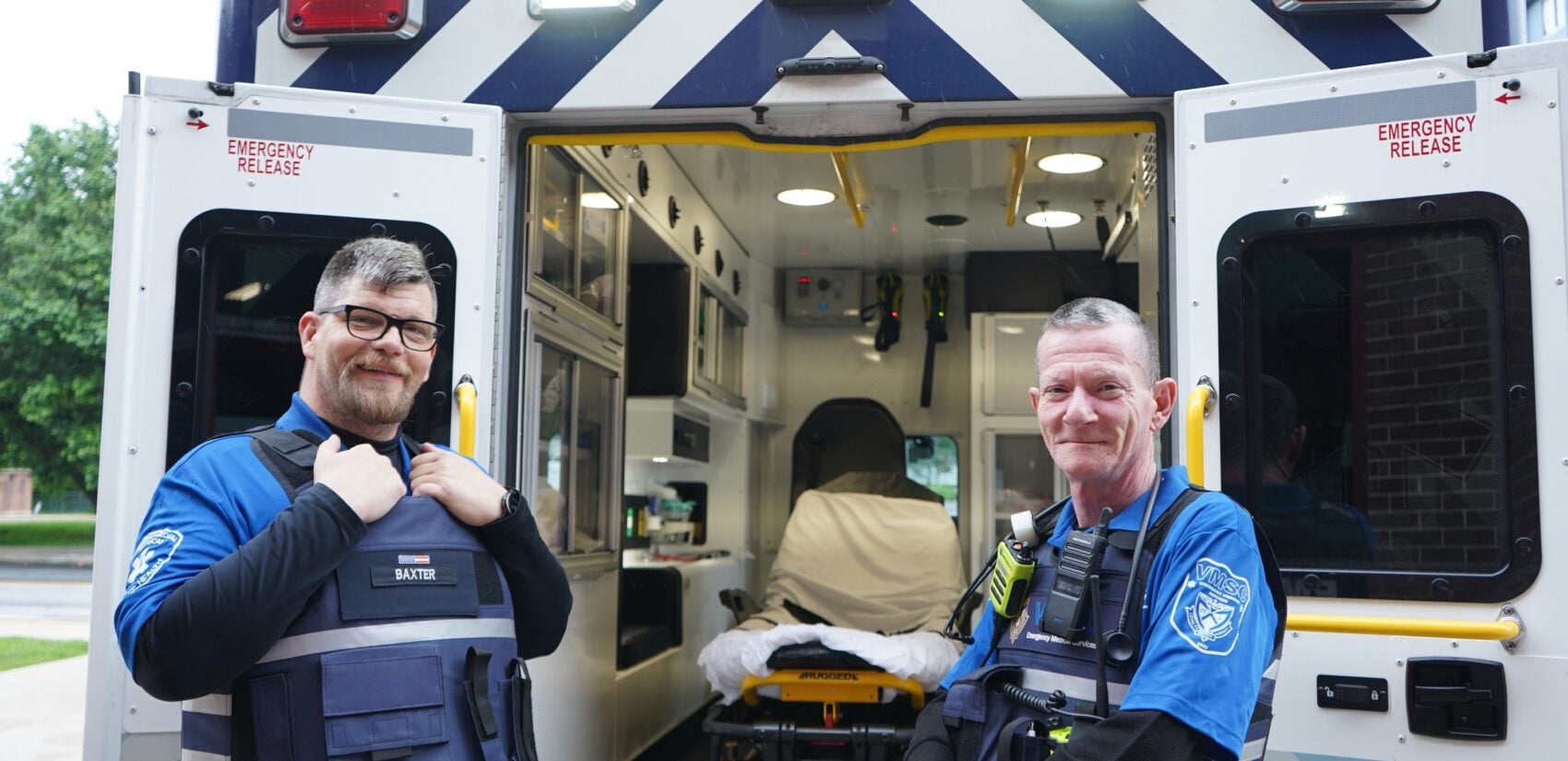
Arriving at the scene takes longer, data shows. Patients are skeptical
Crozer Health was once a robust four-hospital system. The system’s ambulance fleet served more than half the county. In 2022, owner California-based Prospect Medical Holdings shuttered Delaware County Memorial Hospital in Drexel Hill and Springfield Hospital in Springfield.
Prospect filed for bankruptcy in January. The company officially closed Crozer-Chester Medical Center and Taylor Hospital in Ridley Park in May. The only hospitals remaining in Delaware County are Riddle Hospital in Media and Mercy Fitzgerald Hospital in Darby — neither of which are designated as a trauma center like Crozer-Chester once was.
This means patients facing serious health crises might travel outside of Delaware County to a facility capable of treating their ailment, such as Lankenau Medical Center in Wynnewood, Penn Presbyterian Medical Center in Philadelphia or Christiana Hospital in Newark, Delaware.
After Crozer’s closure, Lansdale-based VMSC stepped up to fill the gap in providing ambulance rides. They hired 42 former Crozer paramedics and emergency medical technicians, including paramedic Kate Denney. While responding to calls from the Chester Fire Station 82 has allowed Denney to reach the scene quickly, she said the termination of Delaware County’s largest hospital system has had a severe impact on emergency care.
“What bothers me is that we do not have hospitals within our area [with] reasonable means to care,” Denney said.
According to Delaware County EMS data, the closure of Crozer Health’s four hospitals has had a direct impact on response times.
The average response time steadily increased from seven minutes in 2018 to 11 minutes in 2022, when Delaware County Memorial and Springfield closed. The average response time has remained at 11 minutes as of June 2025.
Denney and her colleagues also lose valuable time dealing with patients, who are sometimes hesitant to travel to hospitals farther away from home because either they are unaware of Crozer’s closure or they are worried about transportation back home.
“A lot of the community, they want to delay their health care because of the situation. They don’t want to come to the hospitals because of the wait time,” Denney said. “So I need to make sure to assure them that it’s important that they do go because waiting or delaying can be detrimental to them.”
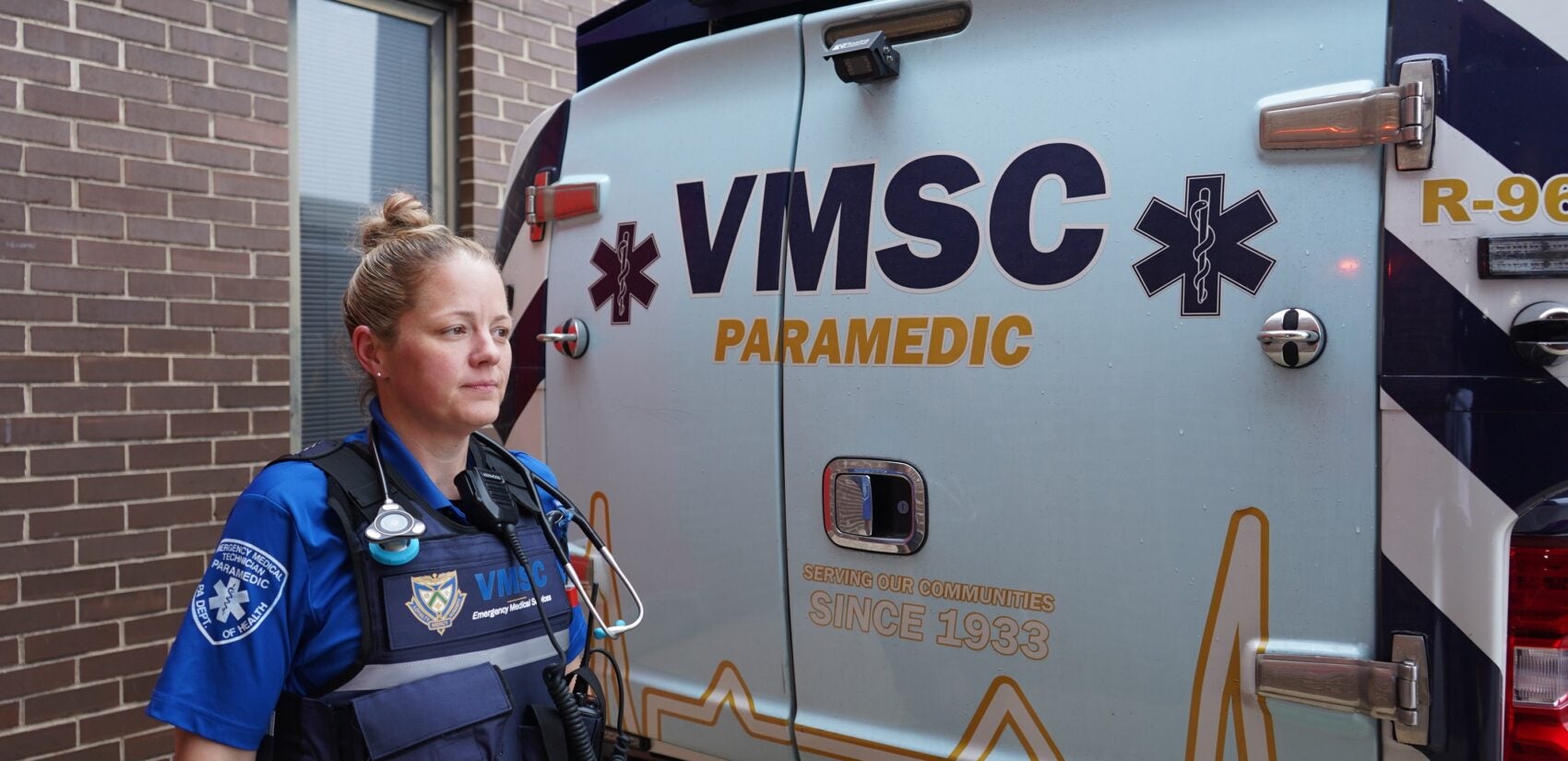
Transport times skyrocket by 400%: ‘You go the wrong way, it’s game over’
Dave Marcantuno, a retired Crozer paramedic, doesn’t remember everything about his job, but he has a perfect recollection of four patients — whom he could have pronounced dead — that were resuscitated at the hospital.
He credited close proximity to the hospitals for each of their survival. Watching the collapse of the EMS system from afar, Marcantuno said he fears the worst.
“There’s going to be a big chunk of people that either have a permanent disability, because they didn’t get treated soon enough, or die because the travel time is too far,” Marcantuno said. “It’s absolutely going to happen.”
According to Delaware County EMS data, the average patient transport time from the scene to the hospital jumped from nine minutes in 2018 to 19 minutes in 2022, when Delaware County Memorial and Springfield closed.
The average transport time skyrocketed to 40 minutes in May 2025 — which represents a 400% increase from the 2018 baseline — following the closure of Crozer-Chester and Taylor. The average transport time fell to 29 minutes in June 2025, which is still more than three times as high as it was in 2018.
“My delivery of patient care hasn’t changed. I’m always the same provider. I always treat [patients] the same. However, my transport times have almost doubled or tripled since the closure,” Denney said.
Steering the ambulance through Delaware County has become a nightmare.
“There’s like maybe a couple hours in the morning, a couple hours in the afternoon with traffic, you go the wrong way, it’s game over regardless if there’s lights on or not lights. Lights and sirens just create havoc sometimes. People freeze up and you’re just putting yourself in a worse position,” VMSC EMT Dan Baker said.
Denney said there’s already been instances of the lengthy transport times leading to fatal consequences.
“There was a gunshot victim who bled out being transported to the nearest hospital and unfortunately, he did not survive. So time is of the essence,” Denney said.
EMTs and paramedics said they carefully choose which hospital to take patients to. When Mercy Fitzgerald’s emergency department is full, ambulances high-tail it to Riddle — and vice versa.

Overwhelmed emergency rooms keep ambulances from returning to home base
There’s a misconception that traveling via ambulance skips someone to the front of the line.
“It’s almost like a MASH unit in there, sometimes as busy as it is. You can tell they’re feeling the strain. Sometimes in a waiting room it’s standing-room only. That’s how overwhelmed they are,” VMSC EMT Tony Welch said.
Denney described it as “organized chaos.”
“I’ll describe it like a can of sardines,” she said. “You’ve got to think thin to move around in there because you got nurses that are trying to move around with mobile equipment to take vital signs on patients. Where the hallways were once clear, you now have beds lined up again against them labeled in alphabetical order by the first letter of the alphabet or you might have people that are sitting in chairs.”
It takes teamwork to keep patient care steady and uninterrupted. Denney said she and her colleagues often wait a while to officially transfer care of the patient over to the overwhelmed hospital.
“Once the patient gets assigned a room, I’ll put them on the monitor and start the blood pressure for them, get the patient disrobed in a gown — whatever I can do to help them because I know they’re struggling just as much as we are on the streets,” Denney said.
The result can be a long time waiting by the walls after arrival and patient transfer as well as a lengthy ride back to the station. The totality of this process is called the turnaround. The average turnaround time was 24 minutes in 2018. The number jumped to 48 minutes in 2022 when Delaware County Memorial and Springfield closed.
The average turnaround time leaped again to 55 minutes in May 2025 following the closure of Crozer-Chester and Taylor and 50 minutes in June.
Depending on the severity of the patient’s emergency, the handoff of the patient can sometimes keep paramedics and EMTs stuck inside of emergency departments even longer.

Neighboring hospitals say they are doing the best they can
In a statement to WHYY News, a Main Line Health spokesperson said the system recognized months in advance that it needed to step up and help communities impacted by Crozer’s closure.
“We have taken steps that have ensured that all patients continue to receive high-quality, equitable care,” the statement read. “Unfortunately, wait times have been affected by our unprecedented 50% increase in Emergency Department volume. We continue to evaluate and streamline processes to move patients through more quickly. We have also used more of our own staff and hired a number of clinical and non-clinical staff from Crozer to help address the situation.”
Marlow Levy, president of Mercy Fitzgerald and Saint Francis Hospital, told WHYY News in a statement that hospital leadership has been in close communication with Delaware County’s elected officials to find workable solutions.
“In response to the increased demand for emergency department services, Mercy Fitzgerald Hospital has committed additional clinicians, nursing staff and ancillary personnel to ensure we can continue delivering safe, high-quality care to all who need it,” Levy wrote. “We’ve also mobilized key resources, such as equipment and supplies, across our hospitals to meet the evolving needs of the community.”
Haverford is much closer to Bryn Mawr Hospital and Lankenau Medical Center. The township also has a contract with Narberth Ambulance to receive EMS coverage.
When ambulances on the southern end of Delaware County are tied up at the hospital, other service providers from nearby municipalities must step in to provide mutual aid and answer calls in their absence. The cycle continues.
Since August 2024, Haverford has been tracking the number of calls out of the township and the time spent answering those calls. Haverford ambulances responded to 84 out-of-township dispatches in August 2024 for a total of 80 hours.
In May 2025, that number jumped to 117 out-of-township calls for a total of 91 hours. McCanns, of Haverford, said mutual aid is normal, but the degree to which ambulances in Haverford must leave to respond to calls in places like Upper Darby is out of the ordinary.
“It was extremely rare when I started out that we ever went into somebody else’s town,” he said. “It was only ever if there was a big disaster or something, big bad accident or bus crash or something that you went into somebody else’s town.”

Delaware County paramedic: ‘We didn’t build a bridge’
McCanns said the current situation is not “survivable.” He reminisced about the “phenomenal” health services provided by Delaware County hospitals that have now gone belly up.
“Multiple catheterization labs, multiple head scan units, stroke hospitals, trauma centers, maternity units. Many, many of them are gone,” McCanns said. “Good luck having a child right now anywhere in the lower half of this county.”
Welch doesn’t think reality has sunk into the public conscious yet.
“It’s just something we’re going to have to get used to. This seems like this might be the new norm,” he said. “We’re doing the best we can. We’re still going to be there for you. Just might be with us a little longer.”
McCanns said somebody has to come in and reopen the hospitals.
“We didn’t build a bridge,” McCanns said. “We built a pontoon bridge that’s flimsy and we can kind of get across the water for a while. But is that a long-term solution? It’s not.”
Wilmington-based ChristianaCare plans on opening two micro-hospitals in Delaware County.

Get daily updates from WHYY News!
WHYY is your source for fact-based, in-depth journalism and information. As a nonprofit organization, we rely on financial support from readers like you. Please give today.



